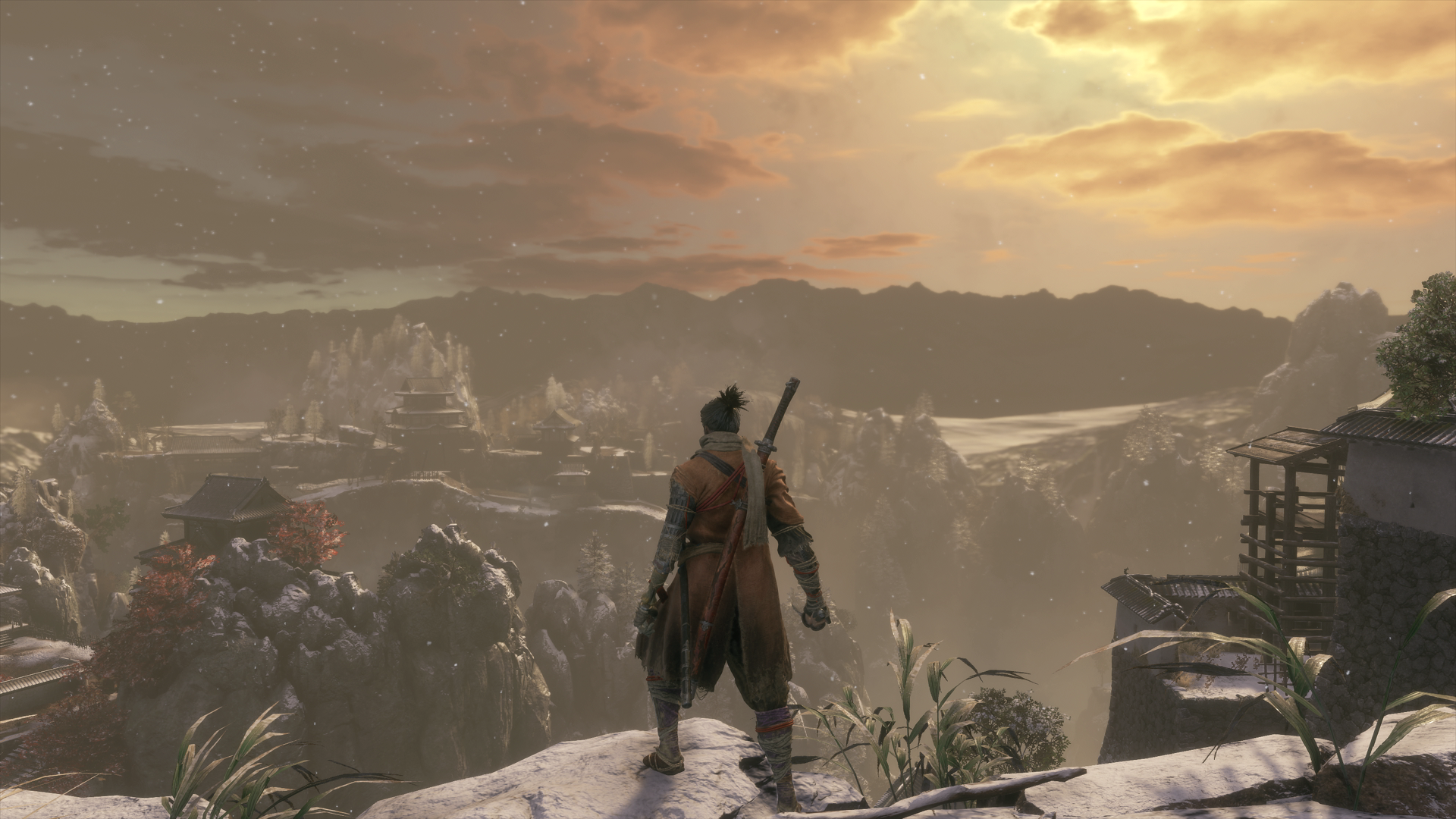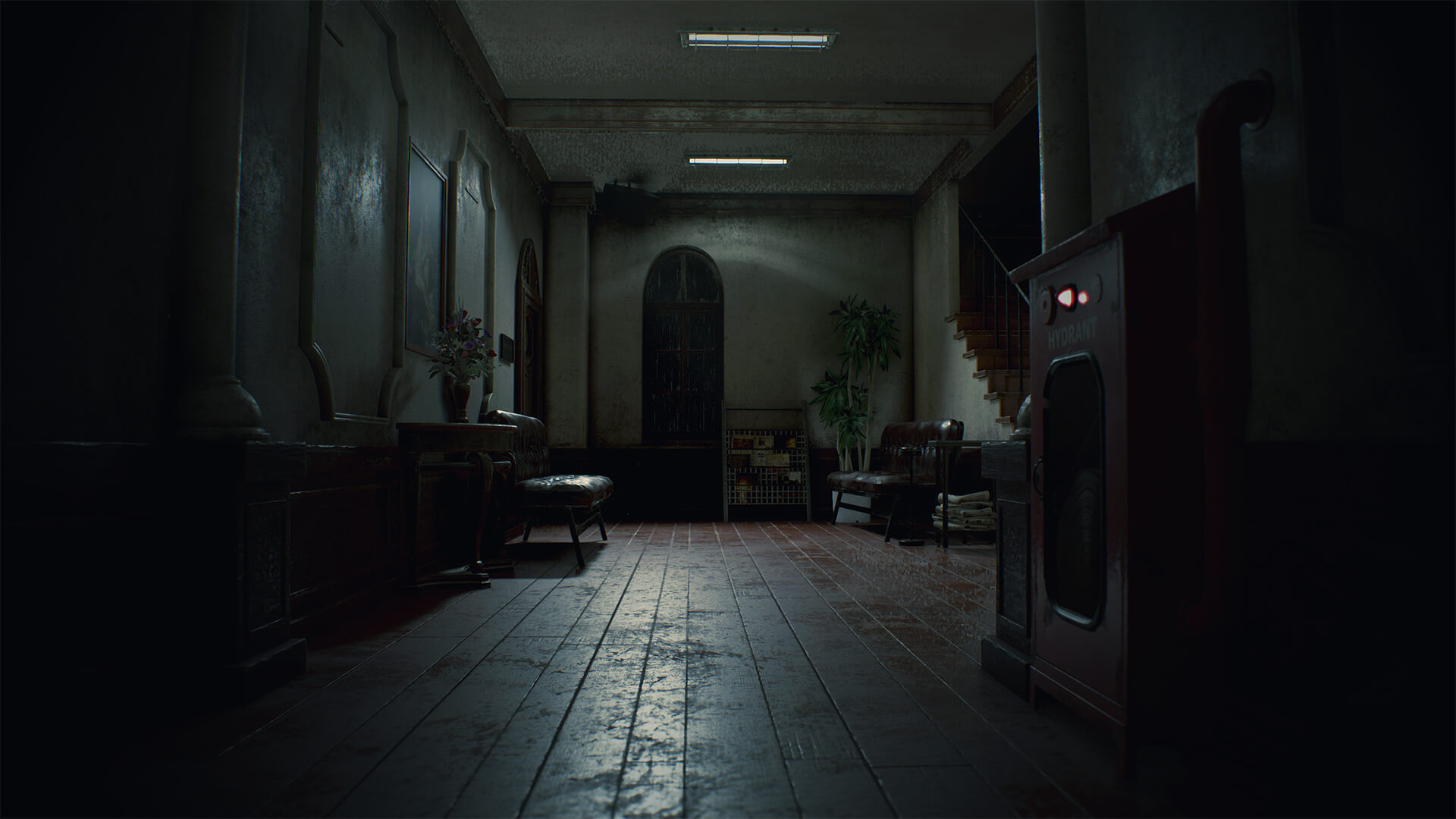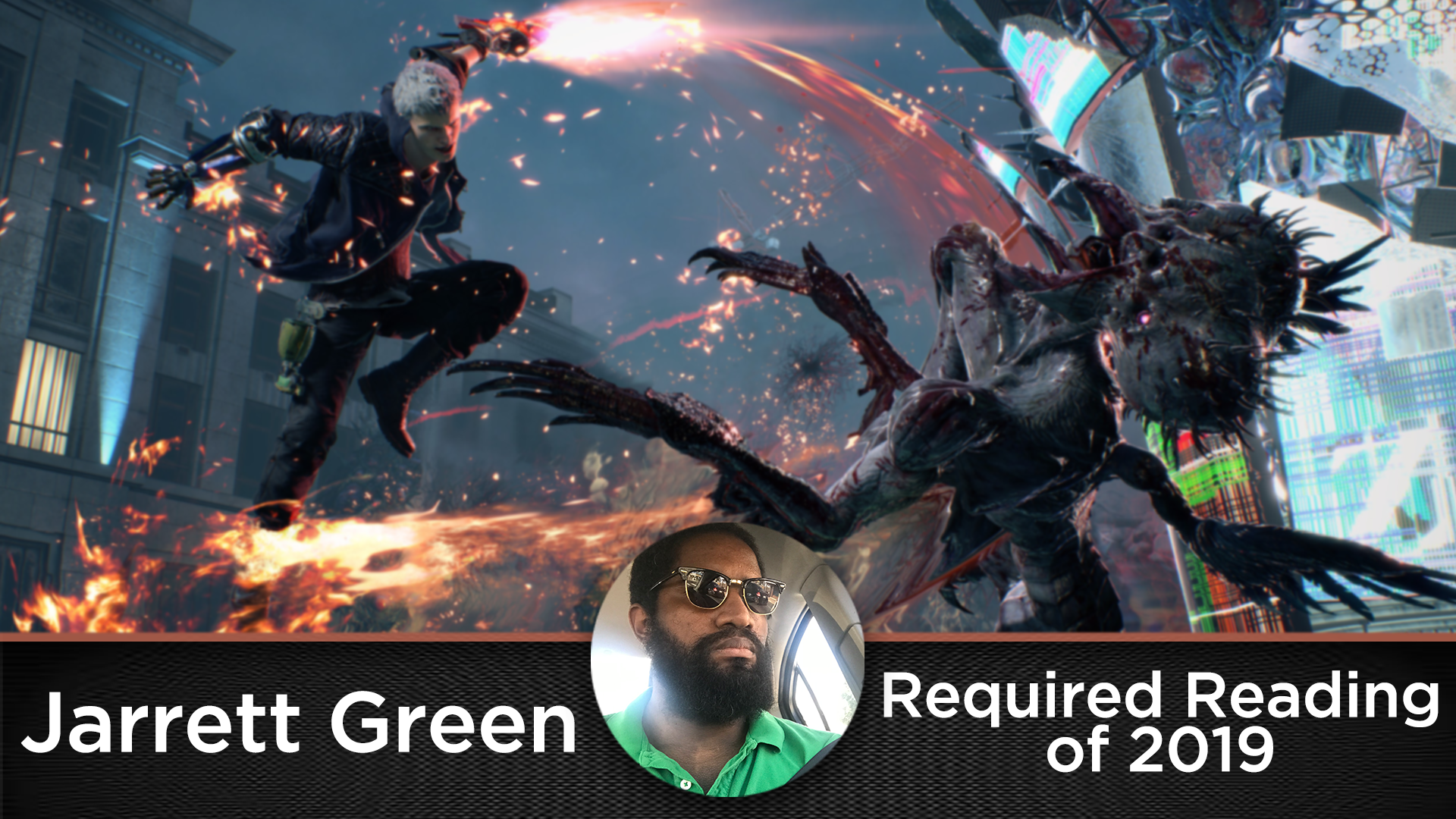I resist this wholesale idea that 2019 wasn’t an inspired year for games. In fact, this has been an incredibly strange year for games that promises to have long lasting repercussions into the next gen and beyond. There was no “megagame” this year, no Red Dead 2 to hype us to apoplexy. But the industry as a whole is taking a form that might show as unrecognizable only a handful of years ago.
Cross platform play is not only real, but is growing, thanks to big companies choosing the consumer over platform developers. Big companies also have to contend with the real world consequences of letting bad behavior linger for too long. When the symbiotic relationship between eSports dev and gameplayer dealing with political strife outside of the realm of digital cards is tested, we’re learning that they still may not be our friends.
Subscription services are in full bloom. Epic Games store’s steady drip of free games and Xbox Game Pass giving access to brand new, AAA titles under the cost of a relatively low cost monthly payment is throwing our understanding of the market value of a video game into chaos. Free-to-Play cast the first stone, but subscribe to play might break the whole glass here.
Of course, thats not what this list is about at all. The previous place I used to talk about this stuff, Input, has ridden off into the sunset. So I needed the outlet. Thanks for listening.
To the matter at hand, below is an unordered list of the games I have something to say about. Maybe more importantly, the internet has something to say about. I find ordering lists from best to worst to be a fine and fun practice that I don’t think I want to participate in. I’m more concerned with “the list’s” more important purpose, not as a soap box, but as a curation device. People play these games, maybe you’ve heard of or you haven’t, and have opinions of them, some you’ve also heard of or maybe haven’t. Where as many people write these opinions to be the link in a chain, I’m hoping this one can be a chain, in and of itself.
That’s why I commit to the bit of adding “Required Reading” to all of my blurbs below. People out there in the ether have some pretty interesting things to say about these games. Many of them have influenced my opinion of these titles in one way or another. Hopefully, you can climb this chain to the peaks of your own conclusions.
Lofi Hip Hop Beats to Chop and Slash To
One of 2019’s great mysteries: How much are people being paid to make their games Apple Arcade exclusives. This kind of plays to a related mystery: Would Grindstone, a good ass video game in its own right, be nearly as critically heralded without the ground swell of Apple’s marketing arm? The world may never know either.
That said, Grindstone feels a whole lot like a game that would have been Free-to-Play had Cupertino not come knocking. A couple of design decisions, like health refills, feel pretty useless without the added pressure of having to pay for access to them. Difficulty seems to spike in odd and unexpected places – a signal that there were choke points designed to part you from your in-game currency after lulling you into a false sense of security.
These relatively harmless flaws are maybe the only things I can really point to as critiques of this otherwise instant classic puzzle game. It has such brisk “you seen this before but not like this” gem smashing gameplay, which a killer visual and audio aesthetic that makes this game stand head and shoulders above it’s Arcade peers.
‘Grindstone’ Is a Perfect Puzzler to Showcase Apple Arcade’s Promise
I Wish I Could Just Buy My Favorite Apple Arcade Game

Hell Bent for Leather
Further proof that 2019 is the longest year ever recorded: Devil May Cry 5 came out this year. There was a time, years ago, when most of us were sure that we’d never see this series, in this form, again. Many people blame Ninja Theory’s go at the series, that completely re-imagined it as a more Western cinema-inspired affair. Be it its attempt at telling a heady allegory about the importance of resistance, or its unbridled irreverence for the series the game came from, people were mad. Wrong, but mad.
So when it was made official in 2018, there was a sort of kinetic energy radiating from a long dormant fan-base that can only parallel by maybe a sports team winning a championship after decades of drought. The victory parade was that DMC5 was actually good.
Its all relative, of course. If you were looking for a self-serious sojourn through dimensions that attempt to use the context of being a rebooted game as a double entendre for introspective soul-searching, your about a year late. The most impressive thing about DMC being resurrected after all these years is that it’s the same damn thing it’s always been. Even with the nominal adjustments visually and mechanically to make everything feel more modern, this game is designed like its 2008. Its narrowed by linear progress. It maintains its emphasis on stylish killing with a splash of mediocre 3D platforming. It has a story that means absolutely nothing outside of the context of demons fighting other demons over forbidden hell powers.
Sometimes, that’s all I need.
Devil May Cry 5 is fantastic, but DmC: Devil May Cry’s message is more relevant
They Don’t Make Games Like DMC5 Anymore, For Better or Worse

Dukkha Souls
Sekiro: Shadows Die Twice gets what it deserves. It’s heavily lauded as the best in a decade-long refinement process of maybe the most influential game design motifs in recent memory. It is derided for being bullishly inaccessible, using difficulty as wall instead of an on ramp. It’s the best Souls game that even Souls Stans are likely never to finish.
I won’t embarrass myself by attempting to make a “games as art” argument here. That said, humanity’s greatest works are often those bridge the most solid of connections between the observer and the artist. The intention can be up to interpretation, but reading a classic book or studying an ancient canvas can often feel like peering into the spirit of the creator itself. Sekiro might be the first time I really felt like I was looking into an artist’s psyche.
Of course, you never want to get to romantic about auteurs in game design. Sekiro may be Miyazaki’s brain child, but he had a fleet of men and women putting this thing together every step of the way. I don’t want to take anything away from those hard working folks.
But the delicate way that the actual act of playing Sekiro so deftly enhances and supports its Buddhist narrative about the cycle of life and death is visionary. Souls/Borne games ares gloomy, moody affairs, but this is such a delicate story about mortality that it feels much more human, and making an idol out of Miyazaki is an easy trap to fall into. This is before even considering the nitty gritty involved in playing footsies with stamina bars, customizing attack strategies with prosthetic weapons, and thinking both vertically and horizontally when planning routes to your next objectives. In the years to come, I feel like we’ll be taking many opportunities to flesh those conversations out.
‘Sekiro: Shadows Die Twice’ Can Teach Anyone to Enjoy ‘Dark Souls’
Jedi Fallen Order and Sekiro Shadows Die Twice: A Leap in the Dark and the Chaos of History
Cycle of Ultraviolence
There’s a level is stupidity that goes into openly and loudly proclaiming the Mortal Kombat’s single player story is good. Yet here I am, about to tell you that MK has a story worth playing.
For decades, Mortal Kombat has been a game about killing people brutally. Most of these people had historically been hyper-cartoony, with only a light dusting of humanity or even coherent motivation. The backstory of Outworld, Earth, and the ancient gods that govern these denizens is thick with exposition and none of it actually matters because no one cared about any of these people.
Then, back in the old days of 2011, Ed Boon said “what if the last 20 years didn’t happen?” and we’ve been better for it ever since. Between then and now, the stakes of this age old conflict have both been raised and re-contextualized in a way that everyone can get behind. And most importantly, the people both at the center of the issue and in the margins all feel involved and affected by it.
The women are no longer walking tit machines. They’re allowed to have desires, standards, hell even children! Some of them are also tit machines, but I’m completely convinced that that is a decision they made about their own bodies that wasn’t baked in simply for the assumed male gaze.
The cultures of the societies at stake also feels pretty well represented. I wrote earlier this year that making particular characters look and feel more ethnically specific gives the entire cast a larger sense of worldliness. The Tarkatans, the blade-wristed barbarians of which Baraka is a hero, are presented as a real group of marginalized and manipulated people that are surprisingly sympathetic. These seemingly small details are really all you need to rope me into the rest of your super dumb, sci-fi, kung fu bullshit. Take notes, everyone.
Mortal Kombat 11’s Ethnic Retconning is a Powerful Statement
Games-Like
It’s completely unfair to call Remnant: From the Ashes a Souls-like. Combat is tough and decisive. You skulk through twisting dungeons at a crawling pace. Wondering if you’ll make it to the next checkpoint provides that signature horror movie tension Souls games have. But Remnant complicated that by wrapping its gameplay around a familiar feeling third-person shooter that’s also a roguelike?
In many ways, Remnant is a hodgepodge of every major sort of video game that’s been made in the past decade all in one. Gears of War cover shooting, mixed with looter shooter multiplayer, and partially procedurally-generated maps are all in the mix here. Gunfire games creates a new and surprising outfit with all these old hats. Most shocking at all is that it basically tiptoes into store fronts with basically not fanfare.
That Remnant, even when the cat was out of the bag about it’s potential, maintained such an air of mystery the likes we haven’t seen since the internet got big is an enviable feat. This is truly the first game that I’ve talked with other people about and had genuinely different playthroughs of in what feels like a generation. If this game gets any love outside of this year, I hope its for that.
Remnant proved that video games can still be mysterious in the age of the internet
Remnant: From the Ashes Review – Very Deep Roots
Ring of Red
Anyone who’s seen my phone background in the past year knows I have a large affinity for The X-Files. An American government agency attempting to wrangle the paranormal with red tape and a cloud of bureaucracy. Two agents, one a star-gazer who looks to the edges of reality to cope with his own, and one who is an eternal skeptic and so very good at her job, often represent the constant feeble attempts of all of humanity to understand the incomprehensible.
Control really emulates those vibes from minute one. The entire Bureau of Control teems with the inconceivable. Even as Jesse Faden learns the circumstances of her presence there, and the legacy of creatures that constantly claw and tear into our dimension, you never feel like you learn much more than you need to know to survive the next encounter.
Mystique is a huge factor when creating compelling science fiction, and Control is covered in it. It also helps land the games more abstract concepts, like meditating on the character that humans tend to imprint on inanimate objects. In Control, a slide projector isn’t just a group of pictures that are metaphorically windows to other worlds – it literally is a portal to somewhere else.
It’s also absolutely dripping in style. Almost too much of it, which has become a signature Remedy move. Like Alan Wake and Max Payne, Control has seen your favorite movies and tv shows, and thinks they’re cool as shit. Wide frames of shadowy brutalist architecture gives way to a bizarre, impressionist alien menace. A living steel panopticon bleeding red light from the wounds in reality. Sign me the fuck up forever.
Sam Lake on Alan Wake 2, Control, How Max Payne Changed His Life, and More! – IGN Unfiltered 44

Bumps in the Night
Remakes are a thing we’ve sort of had to weather for the last decade. The words “remaster” and “remake” mean almost nothing, though. What constitutes the end result of readdressing a game from yesteryear has been a moving target that is notoriously hard to hit. May Capcom’s Resident Evil 2 Remake being the tracer in the dark that we all follow into this new decade.
I can’t think of a more perfect example of what a “remake” means to me. RE2 had an incredible impact on the genre back in the 90s that can never be replicated but just up-resing the backgrounds and remastering the soundtrack. If you want to reintroduce a game you make 20 years ago, you have to accept that 20 years of games have happened between now and then. People just play games differently these days.
But they can still get shook but sudden jump scares, or creeped out by thick stretches of dread, and panicked by the persistent presence of un-killable juggernaut. Making everything shiner, and making the gameplay crisp, modern, and responsive is a necessary medium to these tried and true horror tropes, and RE2R gets there with such confidence that you wonder why this hadn’t happened sooner.
But as the remake really re-contextualized and recaptured the brilliance of the police station sequences, it did absolutely nothing for the second half of that game. The sewers and the Umbrella lab were let downs in the remake, just as they were back in 1998.
The Difference Between Horror Movies And Horror Games
The Resident Evil 2 remake is one of the best Resident Evil games ever
King of Monsters
To absolutely no surprise, Monster Hunter: World – Iceborne is an excellent addition to an already excellent game. As the series’ first real deal expansion, lots of questions lingered about what this would even look like. A new map and monsters, sure. But enough to spend full game prices to get? Turns out, yes.
With new monsters and a new region came new ways to interact with the entire tried and true system. The clutch claw changed the pace of the entire concept of monster battles for the better. New variations on older monsters kept familiar fights from getting too familiar. The Guiding Lands – a clever Pangea of regions specifically designed for rapid farming – was the kind of developer compromise made explicitly in awareness of how players play their game.
It’s still remarkably unaware about how the concept of fresh hunters camping in foreign lands and killing it’s fauna without much justification looks in these modern times. But hey, if you’re willing to keep it just about taking down challenging boss fights and far the fuck away from conservationism or colonialism, then this game is for you.
‘Monster Hunter World: Iceborne’ Changes the Monsters, Not Just the Weather
What If We Held Hands In Tar Pits of Existential Dread?
I’m gonna be real with you for a moment: I didn’t be Death Stranding. I’m still chugging, but I can’t really guarantee that I will beat Death Stranding. I want to, but it seems that around every turn, over every mountain, and behind every BT filled plain is a game that hates the fact that I’m even playing it.
It’s kind of a charming sort of flippancy. It’s been a long time since I last played a game that isn’t just difficult, but is actively trying to discourage me. It makes me wonder if it really even is trying to discourage me, or have I just been coddled by games for so long that this feels like discouragement? Travelling from place to place is a labor of nothing I would ever describe as love. But it’s definitely interesting and challenging. Until your asked to make way too far a trip, across the miles and miles of land you’ve already traversed, with more restrictive cargo. You could spend time and absorbinate amounts of resources building roads and bridges to make traveling over these lands easier, of course. That ultimately ends up meaning that you’ll spend 10 hours, building things to make what would have been a 45 minute trek just a little easier. That math sucks.
The story, a heavy handed allegory for everything from the perils of the internet to the loss of human contact and possible sex and abortion shaming, is as impenetrable as you would expect from legendary auteur, Hideo Kojima. I’m a Metal Gear Solid fan with the Fox Hound logo tattooed to my leg, so I’m clearly indoctrinated to this bozo. But during even the most ridiculous stretches of MGS exposition, I didn’t roll my eyes as hard as some of the small interactions our hero, Sam Bridges, has with various NPCs. With an open mind, there’s some poetry to be appreciated. And the bedrock of the lore is fascinating. But man, there are too many long sequences of this game that require real dedication on my part to come back from.
That this game even exists, at this budget and with this amount of polish, is maybe the flex of the decade by Kojima and Co.
We need more weird games like Death Stranding even if they don’t always work
Games of the Year 2019: Death Stranding is not for everyone, and I wouldn’t have it any other way








